|
"Silver Spoon"
Trubee Davison, Date Unknown (Source: Web)
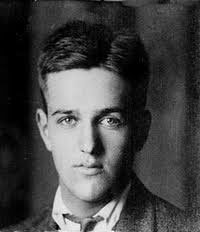 |
F. Trubee Davison landed at Tucson as pilot-in-command on Monday May 23, 1927 at 10:00 AM. He was flying an Army Fokker C-2, which was probably the one named "Bird of Paradise" (26-202) flown from California to Hawaii by Lester Maitland and Albert Hegenberger in June, 1927. Indeed, Lester Maitland was one of his five passengers, as were members of the "Bird of Paradise" crew.
Below, courtesy of the San Diego Aerospace Museum Flickr Stream (SDAM), is what is identified as an early photograph of Davison, date unknown. If you can date it please let me KNOW. Also, I've had at least one site visitor argue the image is not Davison, stating he doesn't wear eyeglasses in any of the photographs further below. I have seen other photos of him as a young man, including the one at right. The two images share the same ear geometry, face shape and hair part on the left side. Davison suffered a debilitating injury about this time in his youth, which may explain his disinterested look. If you can be definitive on an identification of the image below, please let me KNOW.
F. Trubee Davison, Date Unknown (Source: SDAM)
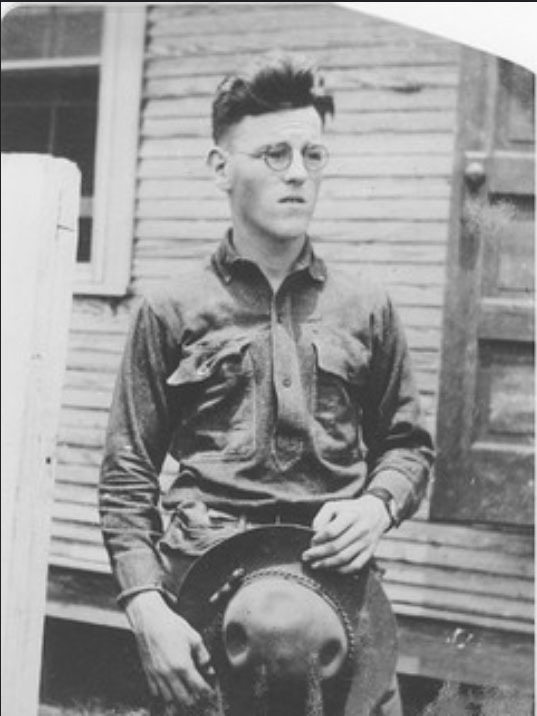 |
In 1926, Davison was appointed to be Assistant Secretary of War for Aviation by President Calvin Coolidge. Below, courtesy of site visitor Roger Holden, an image of Davison in the cockpit of an unidentified aircraft in 1927.
Trubee Davison in Fokker C-2, May 1, 1927 (Source: Holden)
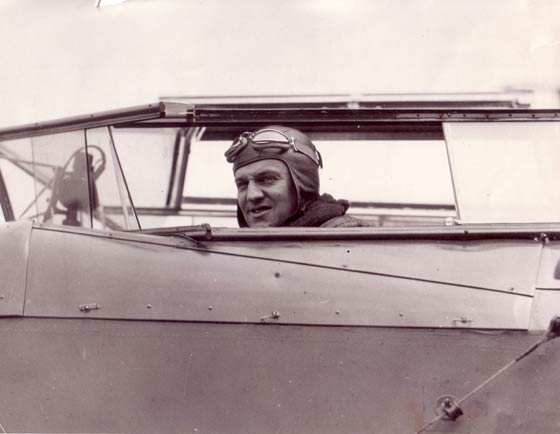 |
Below, the caption on the back of the photograph above. So this photograph was probably taken near the beginning of his flight west during which he signed the Register.
Caption, Trubee Davison in Fokker C-2, May 1, 1927 (Source: Holden)
 |
As pilot , Davison wrote in the Remarks column of the Register, "A real privilege to be the first to land on the new magnificent Tucson Field." I'm not sure what "first" he was alluding to, unless he arrived somewhere near the time the location of the airfield was moved from the corner of 6th and Irvington to the area near today's Air Force Base. That move took place during 1927.
During the same month he landed at Tucson, he published an article in U.S. Air Services magazine, May, 1927, below.
U.S. Air Services Magazine, May, 1927 (Source: Web)
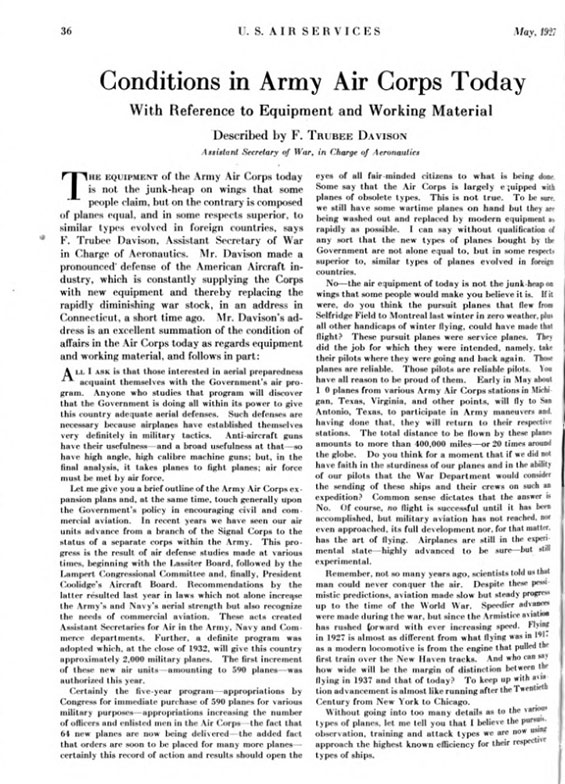 |
This same issue of U.S. Air Services documented preparations by the competitors for the Orteig Prize for flying the Atlantic from New York to Paris. Ultimately, toward the end of the month, Register pilot Charles Lindbergh took the prize.
New York American May 9, 1929
 |
Davison also landed twice as a passenger. First on Saturday, May 11, 1929 at 6:00PM in Fokker C-5, 29-405, flown by Lester Maitland. The C-5 was the Army's version of the civil F-10A with three 330HP Wright engines. Davison holds the distinction of becoming the first Assistant Secretary of War for Aviation during 1926 when the office was created by an act of Congress. In this role, he spent a lot of his time in the air visiting military aviation installations around the U.S. This trip in the "monster" Fokker transport was documented in the New York American of May 9, 1929 (left). Note the slight exaggeration of total horsepower for the airplane.
Departing Washington, DC, this article suggests they visited at least five military installations in the two days before they reached Tucson. This would have been an ambitious itinerary at the time. Note that Tucson is not mentioned in the article, but it is clear from Register page 18 that Maitland, Davison and their three passengers, Col. David L. Stone, SSgt. Roy Hooe and Pvt. Collins did land there.
Further evidence that he maintained this aggressive schedule is found in the Newark Star-Eagle of May 11, 1929. It reported Davison at Randolph Field, San Antonio, TX speaking in favor of hastening construction of the "West Point of the Air", a new military flying school, at Randolph. After his Texas talk, he arrived in Tucson the same evening at 6:00PM.
Interestingly, above, "Flying West" is a metaphor used today for when a pilot dies. It would be interesting to know the etymology, and if use of the term originated before this article was published and the journalist was simply naive, or if the phrase took on the metaphorical meaning in the American lexicon after 1929. Does anyone KNOW?
Below, courtesy of Tim Kalina, are two images of Davison when he was Secretary of War for Aviation. The first is from February 20, 1930. He wears the classic winter flying suit, which looks like the W-214 model with electrified lamb fur lining and nutria collar (about $225). His suit may be seen in this REFERENCE, page 7. The airplane appears to be a Fokker C-2. Note the port engine's starting crank just over his left shoulder.
F. Trubee Davison, Asst. Sec. of War for Aviation, February 20, 1930
(Source: Kalina)
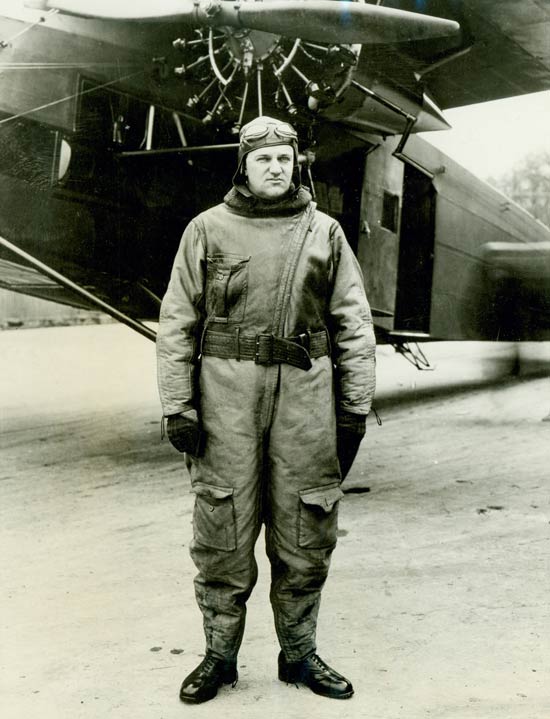 |
Below, the annotation on the back of this image.
Photo Caption, F. Trubee Davison, Asst. Sec. of War for Aviation, February 20, 1930
(Source: Kalina)
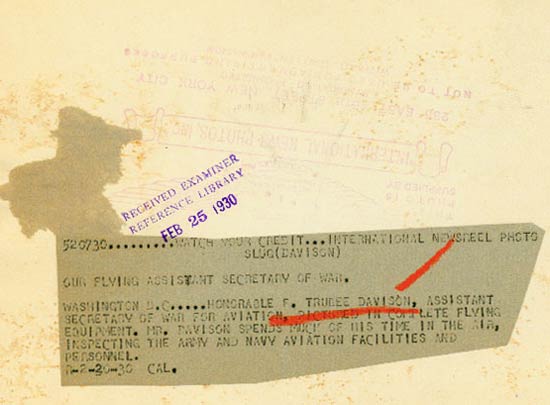 |
The second photograph is of Davison (L) with fellow Register signer Carl Spatz. It is relatively rare to find a photo that captures two Register pilots in the same frame. This is a prime example.
Trubee Davison (L) and Carl Spatz, August 9, 1930
(Source: Kalina)
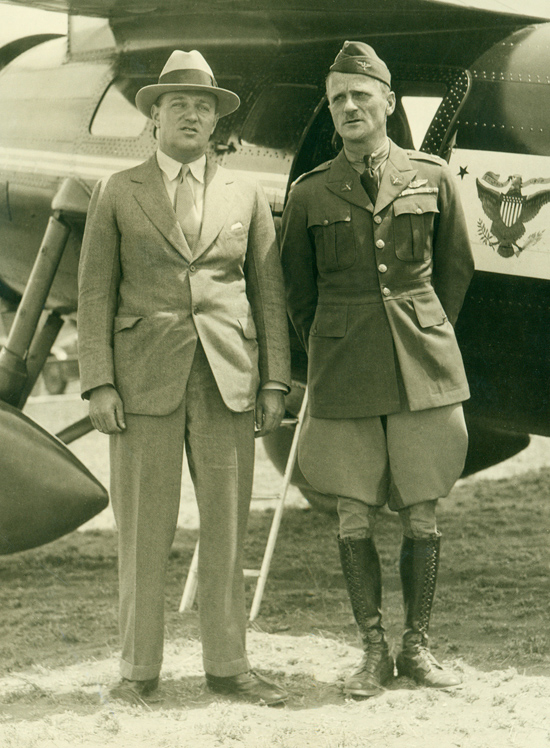 |
Below, the caption on the back of this photo. Mr. Kalina says about the image, "The airplane behind the men is a Y1C-11/C-11A. These were the USAAC designations for the, basically stock, Consolidated Model 17 Fleetster." A photograph and writeup on this airplane is at the link.
Photo Caption, Trubee Davison and Carl Spatz, August 9, 1930
(Source: Kalina)
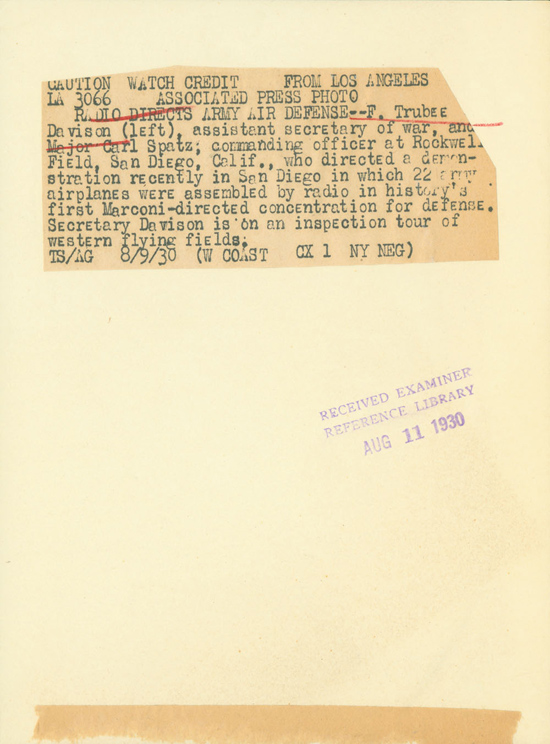 |
Davison's second landing as a passenger was probably on May 11, 1931 (interpolated from the Register), again overseeing Air Corps exercises. He was in Lockheed Altair NR8494 flown by Ira C. Eaker. Later a general, then Captain Eaker was Davison's hack pilot for this trip.
The NASM dossier for Davison, cited in the left sidebar, contains many brief news articles that mention his activities during the late 1920s-early 30s. His work was broad, and the articles involve not only his inspection tours (some mentioning his pilots and the big Fokker transport), but also his foreign travel, speaking engagements, radio broadcasts and an aviation bill conference held in his airplane between New York City and Albany (January 25, 1928). And this, worth quoting for its humorous absurdity, published April 10, 1929 in the New York Sun.
"Flying from Boston to New York we were flying in a very heavy fog when through a slight hole we saw Bridgeport [CT] four thousand feet below. Almost immediately the hole closed up and Bridgeport was lost to us, but I was concious of a particularly pungent odor.
"We flew on through the thick haze for about thirty minutes, feeling that New York was coming closer and closer when suddenly I was concious of that odor.
"Again I turned to my pilot and said, 'Bridgeport!' The pilot nodded and in a moment another hole opened in the fog and there lay Bridgeport beneath us. [were they in a strong westerly headwind, or lost and circling?]
"Resuming our route toward New York the pilot and I made great plans for developing a fog direction finder based on odors sent out from ground points -- a different odor for each town."
|
Apropos Davison's aerial inspection duties, in the New York Times of February 24, 1929 Davison reported that since he took his present position as Asst. Secretary of War 31-months earlier, he had flown 50,000 miles, or twice the distance around the world, without serious delays or mishaps of any kind. This record ended in October 1931 whan the Washington Herald and Washington Post (October 28, 1931) reported a gear-up landing, probably in the Altair, that resulted in no injuries to him or his pilot. Throughout, he had the services of military pilots to ferry him, and he was accompanied as passenger on at least one ocassion by Register signer Major Gen. James E. Fechet. Among his pilots were Lester Maitland and Ira Eaker, mentioned above, as well as Register signer Elwood Quesada (who negotiated the gear-up landing).
A series of articles in the New York Times between October 17 and October 31, 1930, documents the aerial campaigning activities (in an American Eagle aircraft with Ira Eaker piloting) for the Republican party by Davison and some Washington politicians supporting the candidacy of Charles H. Tuttle for New York State governor. This series of articles covers an historic event. The final one states that the campaign was, "...the first campaign by airplane on record .... the tour had covered 2,700 miles and twenty-four hours of actual flying time, with thirty-one stops. In the course of the tour the air campaigners addressed forty-one meetings."
F.T. Davison Marriage Announcement, May, 1920 (Source: Flying)
 |
Davison was born February 7, 1896. Born into wealth, after being graduated from Groton he was a 1918 graduate of Yale. At the opening of WWI, he formed the Yale Naval Aviation Unit. He was taking flying lessons at Huntington, L. I., in 1917 when his airplane crashed and he was injured. His recovery was slow and the aftermath of his injuries precluded a military career in aviation, but he boosted and financed the Naval Aviation Unit, even from his hospital bed, during the War. After WWI he earned a law degree at Columbia and worked for the firm of White and Case in New York City. He was married April 16, 1920, as cited in the article at right from Flying, a magazine published monthly by the Flying Association, Inc. of New York City.
Davison's father died in 1922 and left him $4,500,000 in a trust fund. Interestingly, his father's will was published in its entirety in the New York Times of May 12, 1922. Davison was not the only Register pilot with a "Silver Spoon". Others include George Westinghouse and the duPonts.
Thus larded and married, Davison entered a life of politics. From 1921-1926 he was elected to the New York State Assembly (Nassau County; 2nd District). Time Magazine of August 24, 1925 featured Davison on its cover. He had been appointed Chairman of a prestigious new office, the National Crime Commission, to organize a national movement for the reduction of crime. With Prohibition in full swing, consider the context of his responsibilities in this assignment! He served that office until 1927.
He served the office of Assistant Secretary of War for Aviation from 1926-1933. In 1932 he ran for New York's Lieutenant Governor, but was not elected. He was president of the New York Museum of Natural History, 1933-1951, and Director of Personnel for the Central Intelligence Agency, 1951-1952. His papers, scrapbooks and photographs spanning his career are archived at Yale University.
In 1940 he was an alternate delegate to the Republican national convention. He was associated with the Skull and Bones Society at Yale, with all the conspiratorial rumor and baggage associated with that organization, discussion of which is well-beyond the scope of this Web site. A Google search will get you information about that affiliation.
Davison flew West November 14, 1974. Some sources list his year of passing as 1976, but his NASM dossier contains a letter from his wife dated April 22, 1975 which clearly cites November 14, 1974 as his date of death.
---o0o---
Dossier 2.2.68
UPLOADED: 10/13/08 REVISED: 04/03/09, 05/12/10, 09/14/11, 06/11/14, 02/19/15
|












